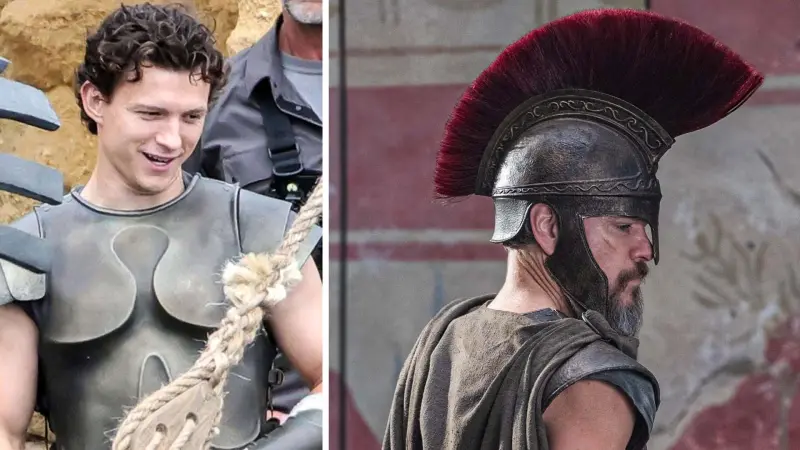The surprise discovery of a 2,000-year-old dog skull sparked excitement among the Long Melford archaeological community, as the picture of the village’s ancient history continues to take shape.
The Long Melford Heritage Trust (LMHT) has been piecing together numerous finds from a recent archaeological excavation at the village’s football ground, which uncovered unexpected evidence of Iron Age activity.
Carried out in July in collaboration with the Stour Valley Community Archaeology Group, the dig was inspired by the BBC series The Great British Story in 2011, when presenter Dr Carenza Lewis identified a possible ancient building at the site.
Kenneth Dodd, lead archaeologist of Long Melford heritage trust, and John Nunn, Chairman. Picture by Mark Westley.
The Long Melford archaeological team has now uncovered signs of a rare instance of Iron Age architecture, along with fine Gallo Belgic pottery, which has been dated to between 20 AD and 50 AD.
Kenneth Dodd, trustee and lead archaeologist at the LMHT, told Suffolk News: “What we thought was a Roman building was actually from the Iron Age.
“It’s not uncommon in our part of the country that historic buildings are lost, because the foundations were made of valuable materials, so they are plundered, but what’s left is a trench.
A 2,000-year-old dog skull was unearthed by the Long Melford Heritage Trust during a recent archaeological excavation in the village. Picture by Mark Westley
“Much to our surprise, this trench was full of Iron Age pottery, which is closely datable.
“An expert was able to date them to 20 to 50 AD, and the Romans arrived at Colchester in 43 AD, so we assume that Long Melford was occupied by the Romans soon after. The strong possibility is this building was destroyed or deliberately demolished.
“That’s quite significant, because we talk in archaeological terms about the Romanisation of Britain. Was it achieved peacefully or by coercion? Was the building demolished because the Romans insisted on it, or was it purely the native inhabitants?”
The dig, which was carried out in July, was inspired by the BBC series The Great British Story in 2011. Picture: Mark Westley
Further excitement was created when the skull of a terrier-like dog – named Terrence by the archaeological team – was recovered from the building’s foundations.
Due to its placement and lack of adjoining skeleton, it is thought that the skull was deliberately buried there, highlighting the ritual and iconographic significance of dogs in Iron Age and Roman Britain.
Mr Dodd said: “Dogs appear to be buried in unusual places, and archaeologists began to realise they had ritual significance.
“This burial was no accident – it was a deliberate deposit. This was a ritual act of closure for the building.
“Terrier-type dogs were very popular hunting dogs. They may have had significance to the Iron Age inhabitants, as well as the Romans, so it’s a very significant find.”
The month-long excavation was the latest in a series of archaeological digs in Long Melford over the last five years, which has shed new light on what the village looked like over the last two millennia.
During the July project, 77 children from Long Melford Primary School attended the heritage trust museum, where they voted for their favourite exhibits, and visited the dig site to help sieve and identify artifacts.
Geophysical surveys of the local cricket and football pitches were also recently commissioned by LMHT, with support from Long Melford Parish Council.
The results indicated presence of previously unknown roads and features, in addition to confirming recent archaeological work conducted by the group.
Mr Dodd added: “It had been assumed that Roman Long Melford was a roadside settlement.
“However, our work in recent years has shown that it was far larger than was previously thought, and the Iron Age settlement was certainly as large as that, if not larger.”









